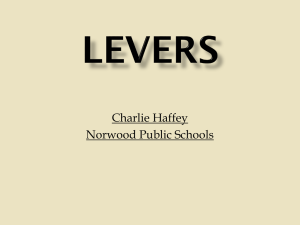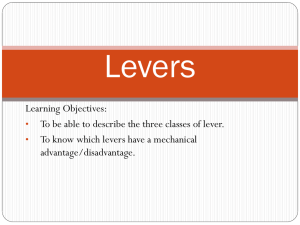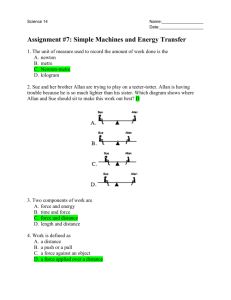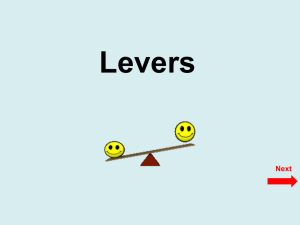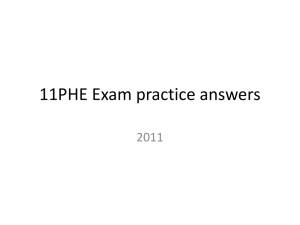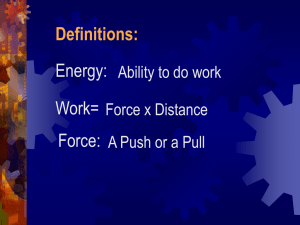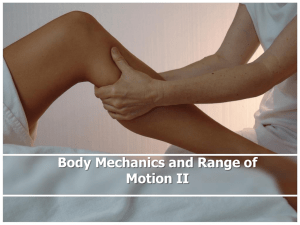Input force
advertisement
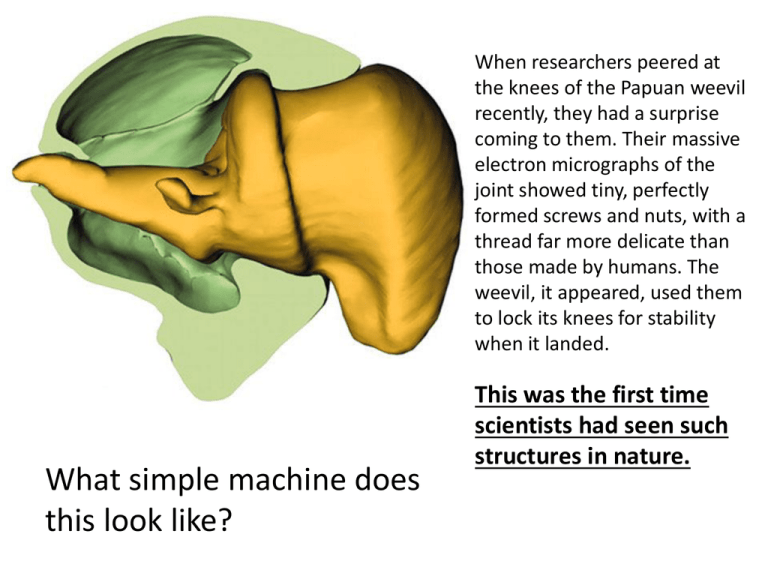
When researchers peered at the knees of the Papuan weevil recently, they had a surprise coming to them. Their massive electron micrographs of the joint showed tiny, perfectly formed screws and nuts, with a thread far more delicate than those made by humans. The weevil, it appeared, used them to lock its knees for stability when it landed. What simple machine does this look like? This was the first time scientists had seen such structures in nature. A lever is a bar that turns on an unmoving point called a fulcrum. When you push or pull on one end of the bar that pressure is called the force. The object that is lifted on the other end is called the load. There are three parts to all levers: • Fulcrum - the point at which the lever rotates. • Input force (also called the effort) - the force applied to the lever. • Output force (also called the load) - the force applied by the lever to move the load. There are three types of levers: first class, second class and third class. The difference between the three classes depends on where the force, the fulcrum or the load is. In a first class lever, the fulcrum is located between the input force and output force. A lever is a bar that turns on an unmoving point called a fulcrum. When you push or pull on one end of the bar that pressure is called the force. The object that is lifted on the other end is called the load. There are three parts to all levers: • Fulcrum - the point at which the lever rotates. • Input force (also called the effort) - the force applied to the lever. • Output force (also called the load) - the force applied by the lever to move the load. There are three types of levers: first class, second class and third class. The difference between the three classes depends on where the force, the fulcrum or the load is. In a second class lever, the output force is between the fulcrum and the input force. A lever is a bar that turns on an unmoving point called a fulcrum. When you push or pull on one end of the bar that pressure is called the force. The object that is lifted on the other end is called the load. There are three parts to all levers: • Fulcrum - the point at which the lever rotates. • Input force (also called the effort) - the force applied to the lever. • Output force (also called the load) - the force applied by the lever to move the load. There are three types of levers: first class, second class and third class. The difference between the three classes depends on where the force, the fulcrum or the load is. In a third class lever, the input force is between the fulcrum and the output force. Other simple machines can be found throughout the body Fingernails act like WEDGES Your patella acts like a PULLEY It changes the direction of the force when your quadriceps muscle pulls on your tibia Your shoulder acts like a WHEEL AND AXLE when you throw a ball and your rotator cuff moves your humerus through an arc, but anatomically it is very different. Another movement amplifier!

